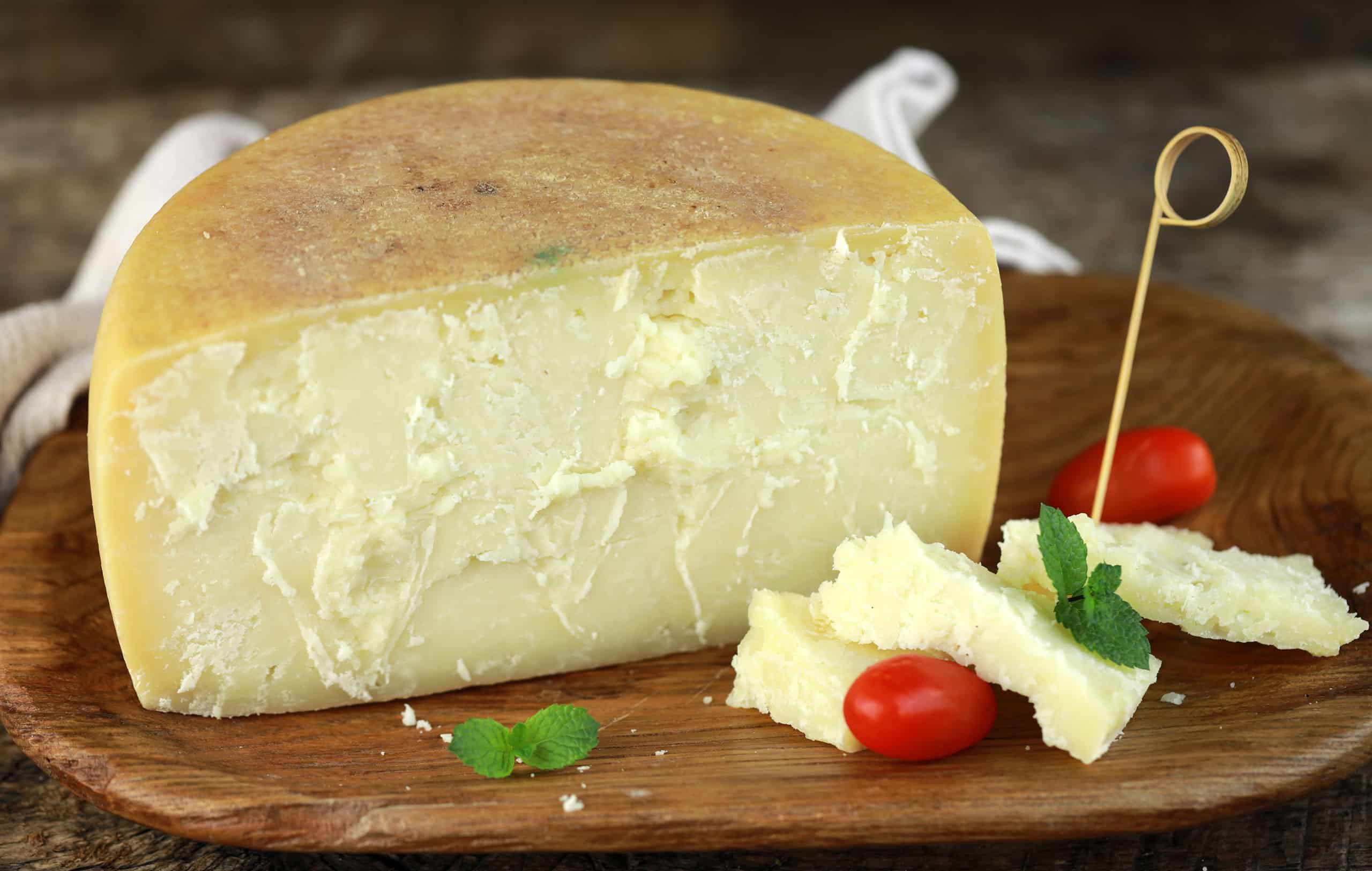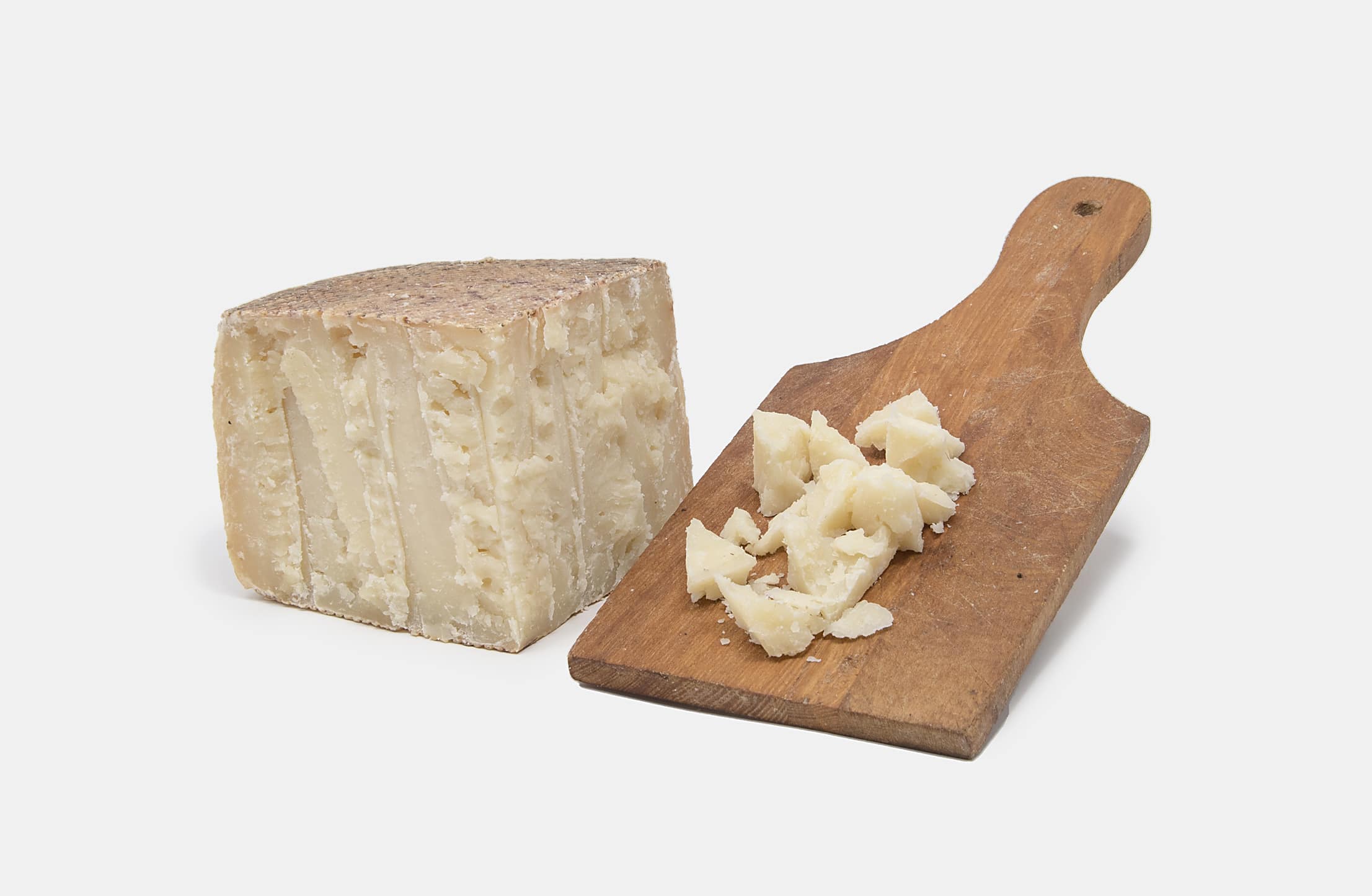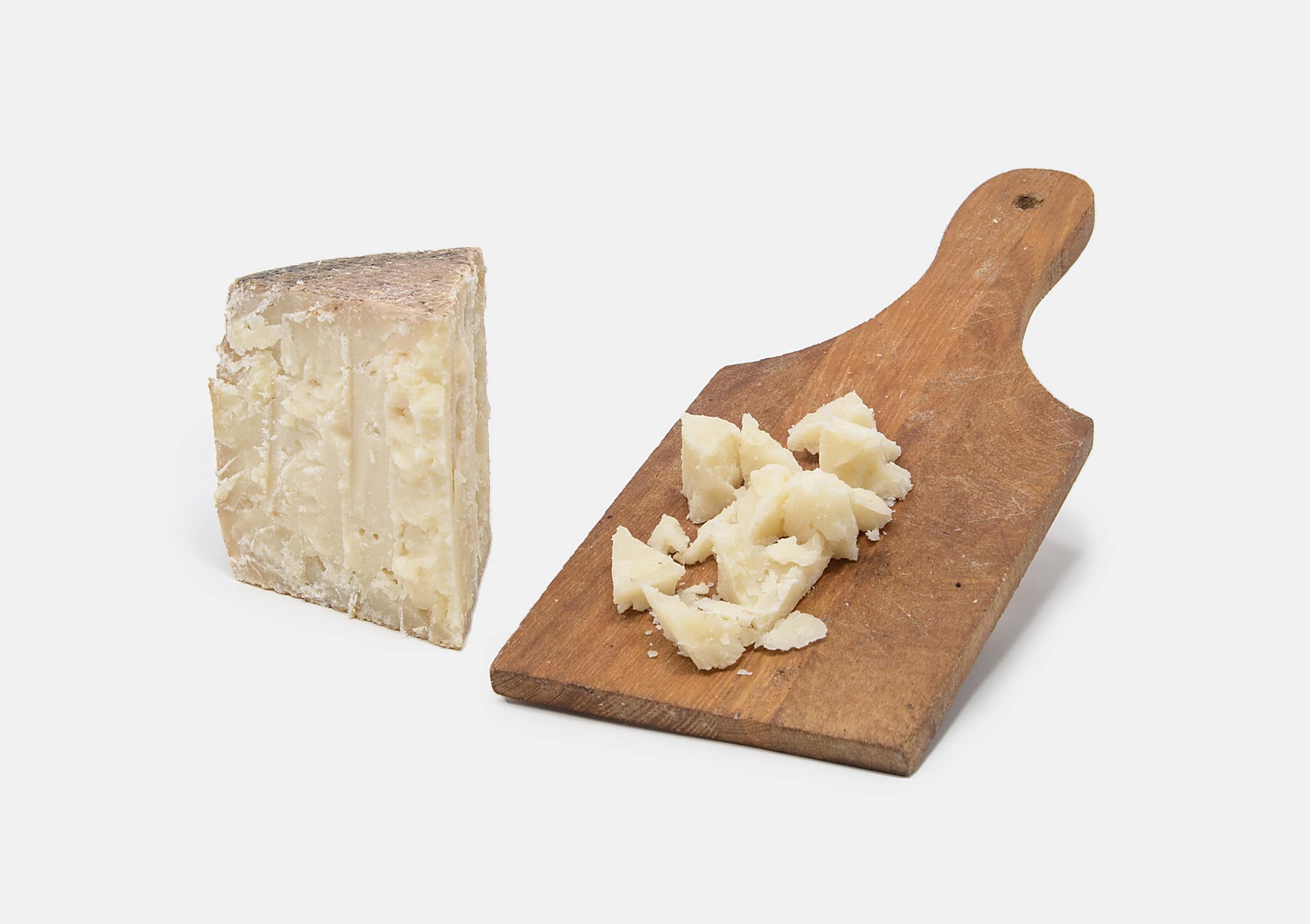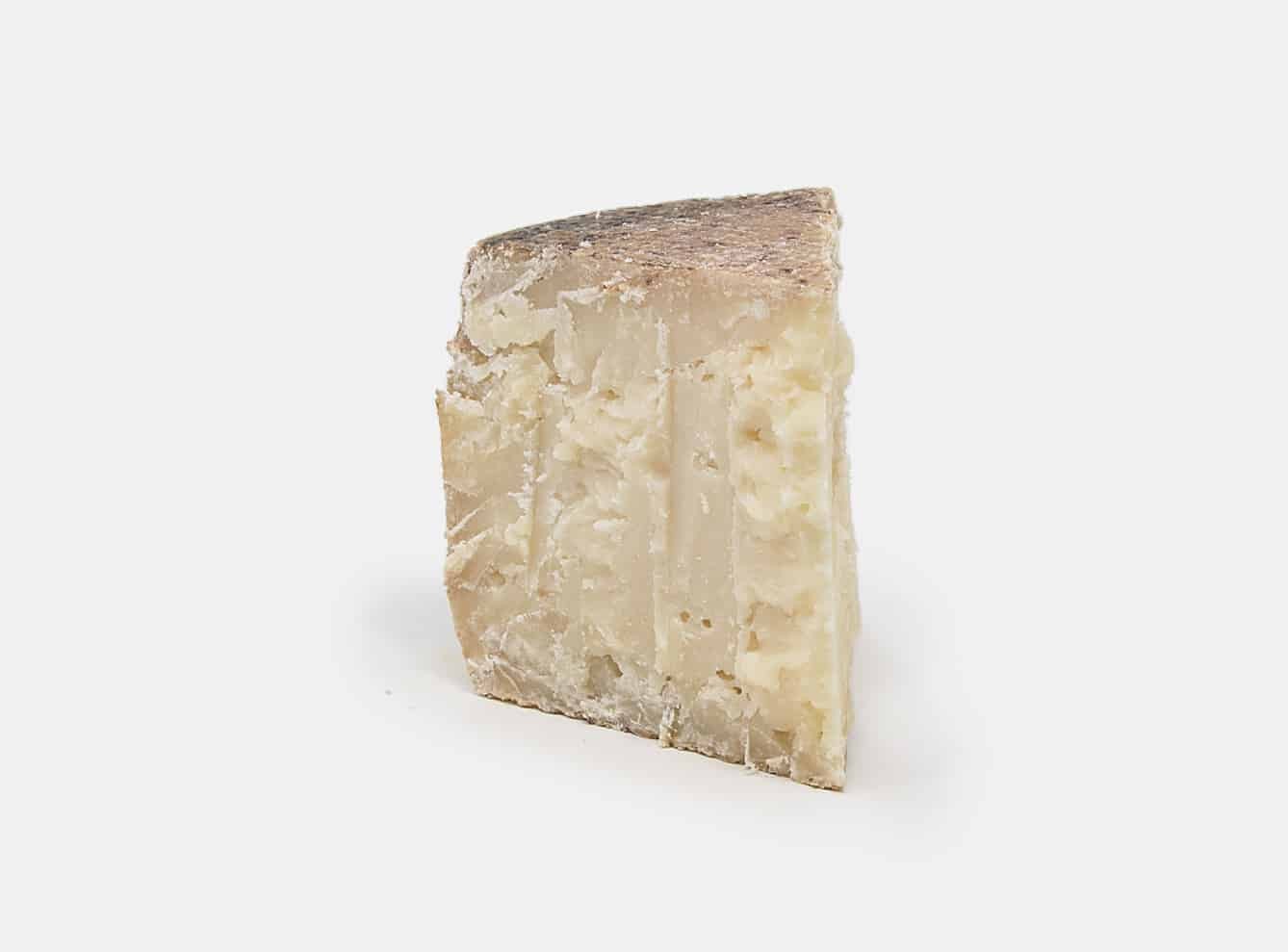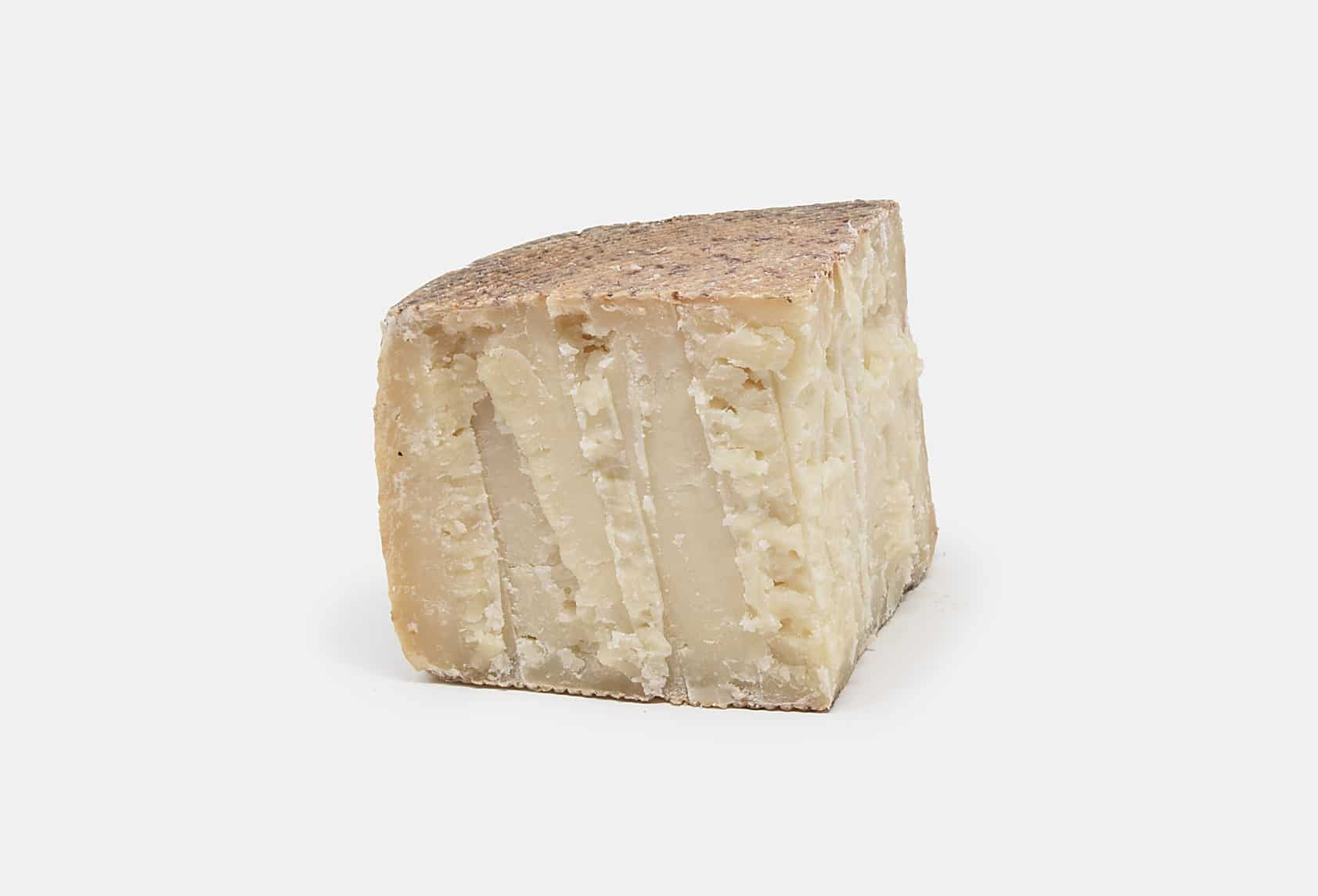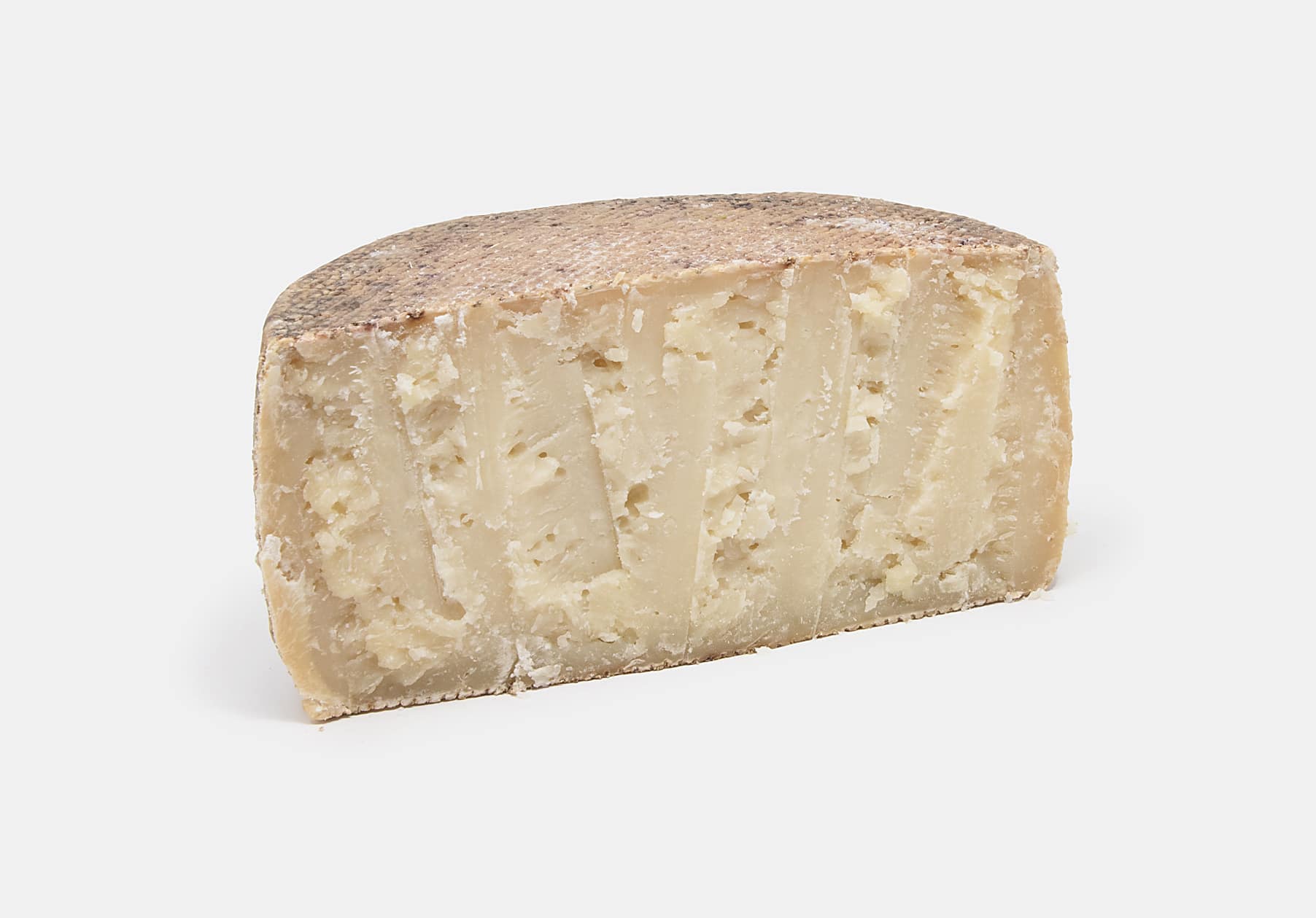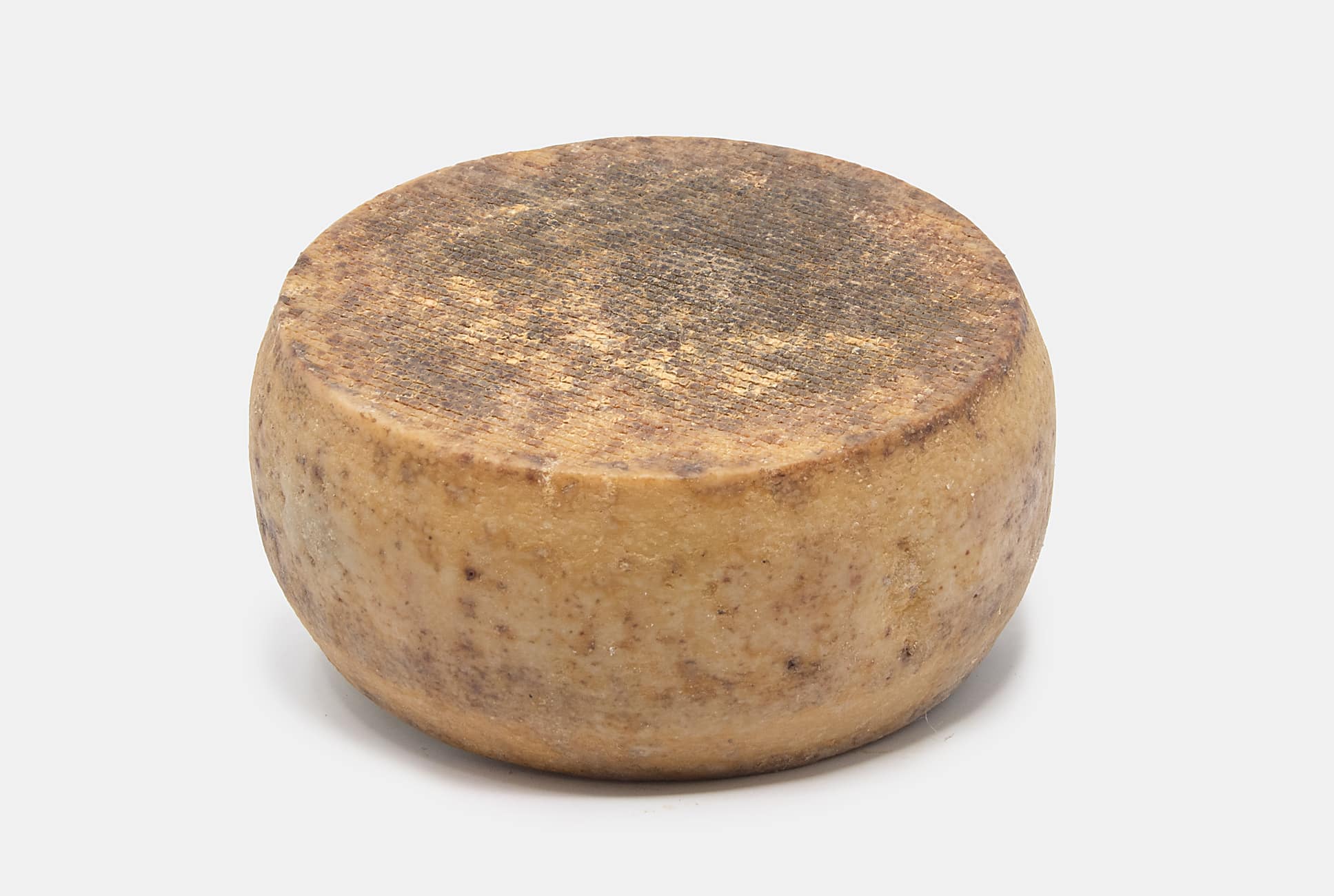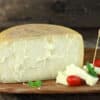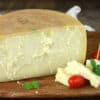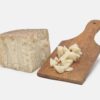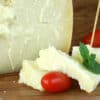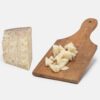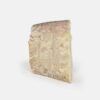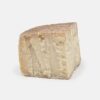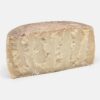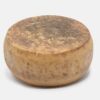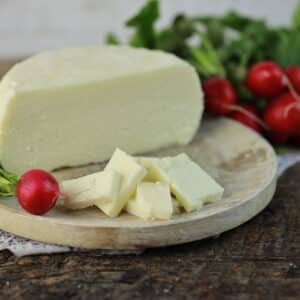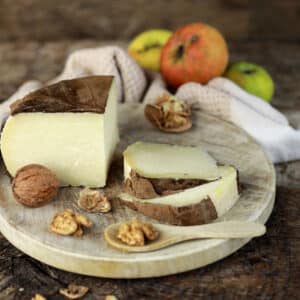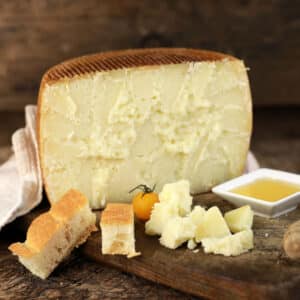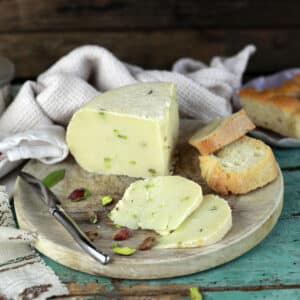Seasoned Pecorino is made in Sardinia; what most characterizes this pecorino is its production period: it is in fact produced exclusively in the warm months of the year, from June to September, adding to the pasteurized sheep’s milk, calf rennet salt, lactic ferments and lysozyme, an enzyme used as preventive preservative of the proliferation of bacteria.
Thanks to the long maturation of four months, it develops a structured and persistent flavor and a compact paste with a full yellow color, but velvety when it melts on the palate.
It is an excellent food during meals, but it can be consumed on any occasion, either alone or with the addition of condiments such as acacia honey whose liquid and syrupy consistency – acacia honey has the characteristic of not crystallizing never – it blends well with the compactness of the pasta, or like the fig jam, whose extreme sweetness creates a pleasant contrast with the pronounced taste.
However, since it is a seasoned cheese, it can also be grated on the first courses, or added to the filling of cannelloni, crepes and ravioli, or in the filling of savory pies and flans.
Processing
Like all aged Sardinian pecorino pecorino, also the Seasoned Pecorino follows a processing process divided into four times, or phases, which start with the pasteurization of sheep’s milk – at a temperature ranging between 35 ° and 39 ° – which is inoculated with lactic ferments and then coagulated with rennet.
This first step is followed by the procedure of breaking the curd which provides that the rennet is broken until its clots have reached the ideal size. In aged pecorino, these granules usually have to be about the size of corn kernels.
At this point, before the curd cheese is divided inside circular molds to be pressed and purged, it is subjected to a semi-cooking at 43 °, also called stewing.
Once the purging and pressing phase is finished, we proceed to the third step, that of salting. Finally, as a fourth and last phase, the forms of pecorino are left to mature in special ventilated rooms, in which the temperature and humidity level are constantly monitored.
The Pecorino Stagionato remains to mature for at least four months. This long aging gives it the classic pungent flavor, immediately recognizable.
History
The history of Sardinian pecorino is a thousand-year-old history that has its origins back in time to the Bronze Age, when the indigenous Nuragic populations – whose remains and ruins, such as the splendid Su Nuraxi Nuraghe in Barumini, can still be admired in the whole island – they chose oviniculture (sheep breeding) as their main source of livelihood, rather than the already widespread agriculture. This trend that remained, indeed spread and was strengthened also during the Carthaginian period first and then Roman, when Sardinia became one of the most important centers of the empire and of the whole Mediterranean for the production of wheat. What facilitated the development of sheep farming and therefore, consequently, the processing of their milk, is attributable to the excellent climatic conditions of the island and its meadows rich in many different herbs at any time of the year.
Although the production of cheese continued throughout the Middle Ages, the first written sources that speak of the different types of cheese produced on the island date back to the eighteenth century. These writings include 5 types of cheese (White, Red Fine, Fresa, Smoked and Spiatau) which were obtained through the use of raw sheep’s milk or heated by immersion of previously red-hot stones. Among these, the Rosso Fine and the Smoked are considered the predecessors of the modern pecorino. Towards the end of the nineteenth century and the beginning of the twentieth century, the production of pecorino was perfected through the introduction of new production techniques and processing procedures (such as the use of the thermometer, the filtration of milk and the use of liquid rennet ) that started the whole process towards new, more modern and hygienic standards. The introduction of lactic ferments, on the other hand, dates back to the 1960s.
Ingredients
Pasteurized sheep’s MILK, salt, rennet, lactic ferments.
Preservative on the crust E235.
Keep in a cold and dry place.
Produced and packaged in the ITA 20-129 CE factory.


